Edoardo Grassi – of the home & gardening website Gaspardatable – has a fever… tulip fever! For our March/April 2022 issue’s flowers feature, “Tulip Mania,” he was kind enough to share his secrets for planting these joyful spring flowers.
SUBSCRIBE TO THE MAGAZINE

Tulips were originally discovered in Persia more than a thousand years ago but only caught the attention of Westerners in the 16th century, when the Dutch botanist Carolus Clusius imported bulbs to Hortus Botanicus of Leiden: the oldest botanical garden in the Netherlands.
By 1636, most of Dutch society was hit by speculative trading for tulips bulbs; as prices rose, people eagerly spent their wages and savings on rare bulbs in the hope of later reselling them for great profit. The resulting tulpenmanie (tulip mania) turned out to be an economic disaster, but the Dutch continued to grow them, and today, the beautiful, bell-shaped blooms are one of the most popular cut flowers in the world.
Tulips’ popularity and success stem from their versatility, ease of growth, long vase life and the thousands of varieties available. Bulbs are planted in the fall so that they have enough time to root before winter and the arrival of the first big frosts. Depending on cultivars and hardiness zones, tulips generally flower from late March to mid-May — to enjoy the longest period of blooming, it is best to pick cultivars that flower at different times.

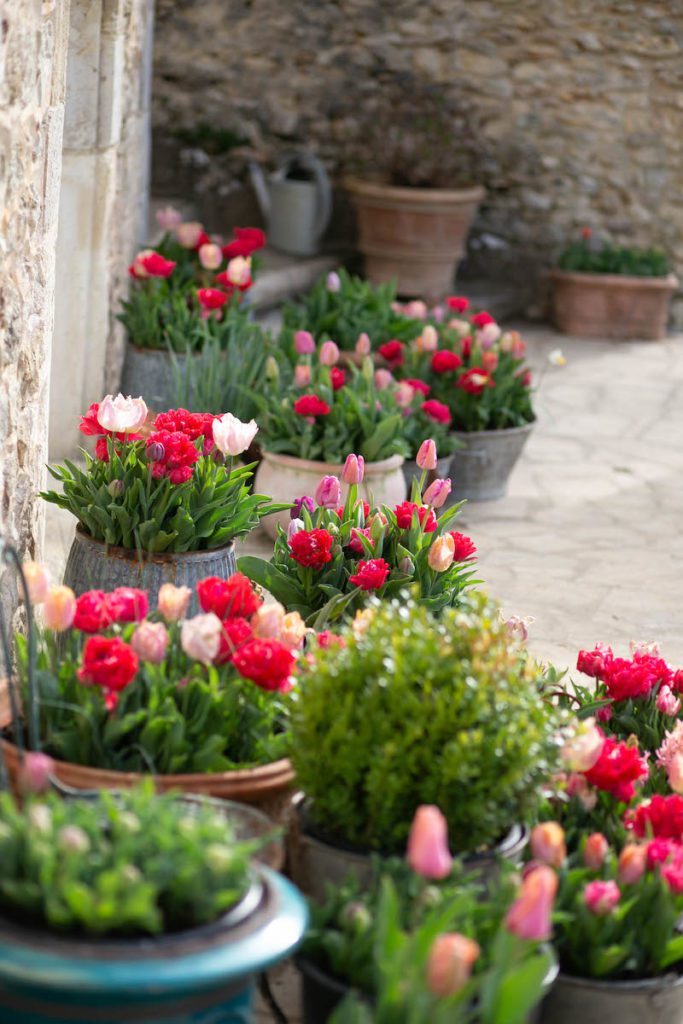
These fashionable flowers bring much vibrant color to the garden — either as glorious pot fillers or cut flowers. Depending on whether you want to grow them in beds or pots, the planting methods will differ. Below are my simple tips to become an expert tulip grower!
- Choose a spot where the tulips will get the most sun, and avoid using soil that is too humid or waterlogged (this will make the bulbs rot!).
- Always plant bulbs with the pointed side up, never touching each other. They also need abundant watering after being planted.

- Tulips grown in flower beds will have the best visual impact if planted in groups of at least 10 bulbs at a distance of 5 cm apart from each other and around 30 cm deep. In spring, if the blooms are picked, it is preferable to leave the two bottom leaves attached to the bulbs — this helps replenish them with nutrients for the next year’s flowering.
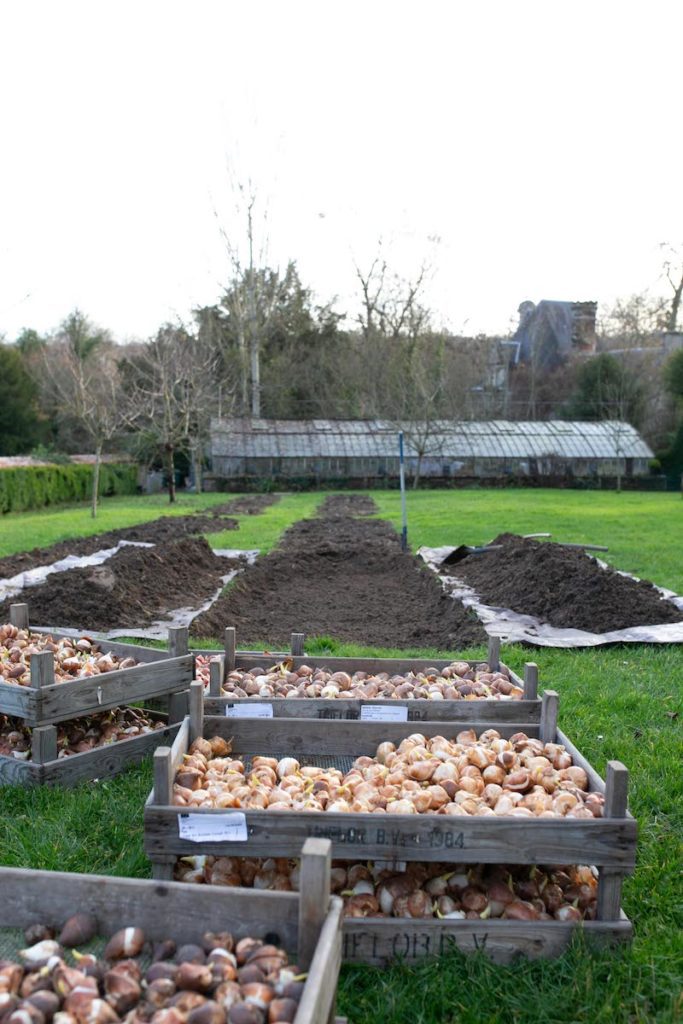

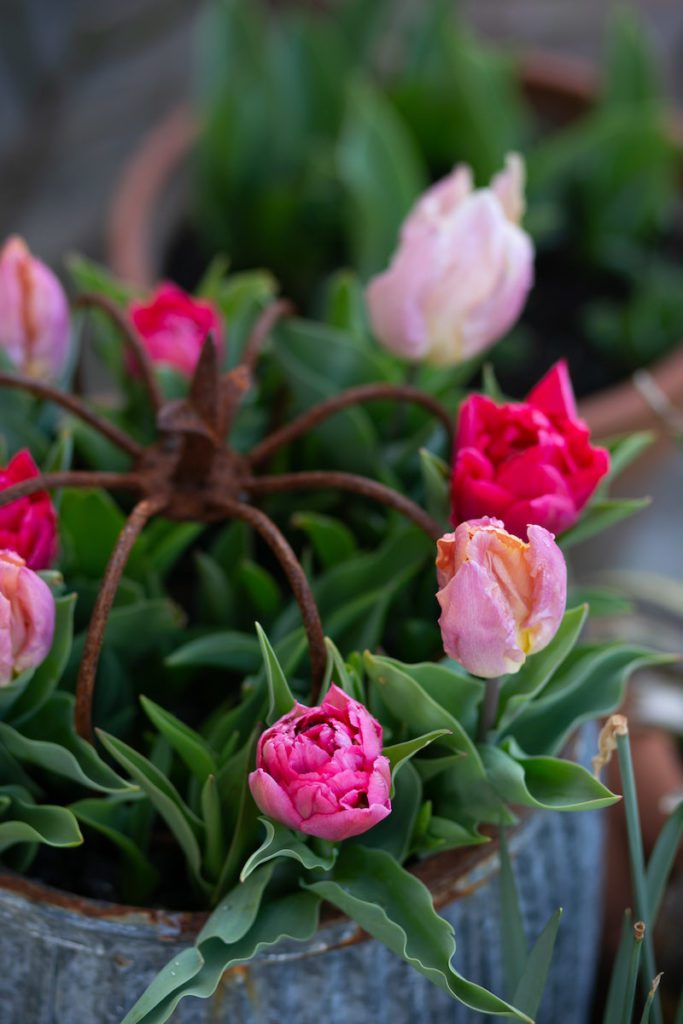
- Tulips that are to be used as cut flowers should be planted 2 cm apart along the base of a 15 cm deep and 100 cm-wide trench; the length will depend on how many bulbs you have. To do so, dig up the soil to one side, rake the bottom of the trench and lay the bulbs in rows. Water abundantly and cover with the dug-up soil. Adding an additional 3 cm of mulch or organic matter will improve flower quality. As soon as the buds show a touch of color, you can pull out the entire tulip (with the bulb). The buds can either be used immediately or stored, with the bulb attached, in the fridge for a few days, until you are ready to use them.

- The best method for planting tulips is in pots, which requires a bit more work but offers long-lasting pleasure. There is a method for mixing varieties, which the Dutch call a “Bulb Lasagna”
Step One
Decide on a color palette, and avoid mixing too many colors in the same pot. Go for cultivars that flower at different times: early, mid-season and late.
Step Two
Take a large pot, fill the base with clay pebbles, then cover with a decent layer of compost
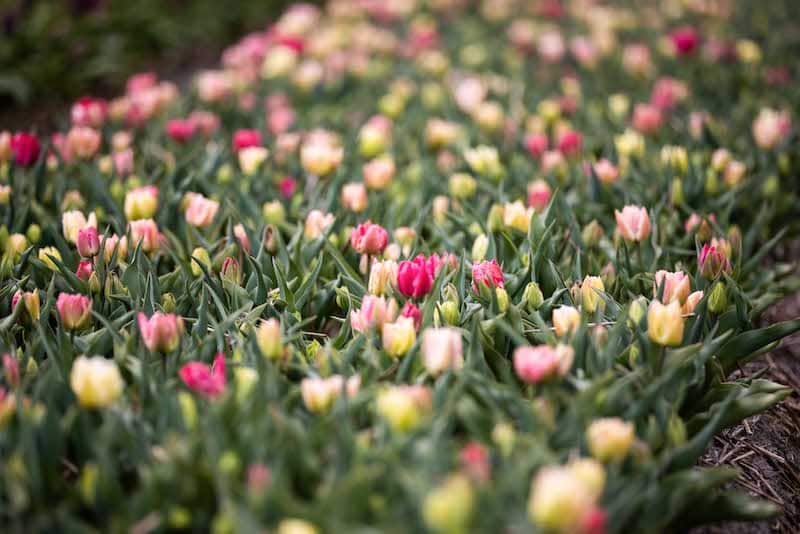
Step Three
Plant later-flowering varieties at the bottom of the pot, mid-season flowering on the next level and early varieties just underneath the soil’s surface. Adventurous gardeners may mix tulips with wallflowers, hyacinths, daffodils, irises, crocuses or alliums.
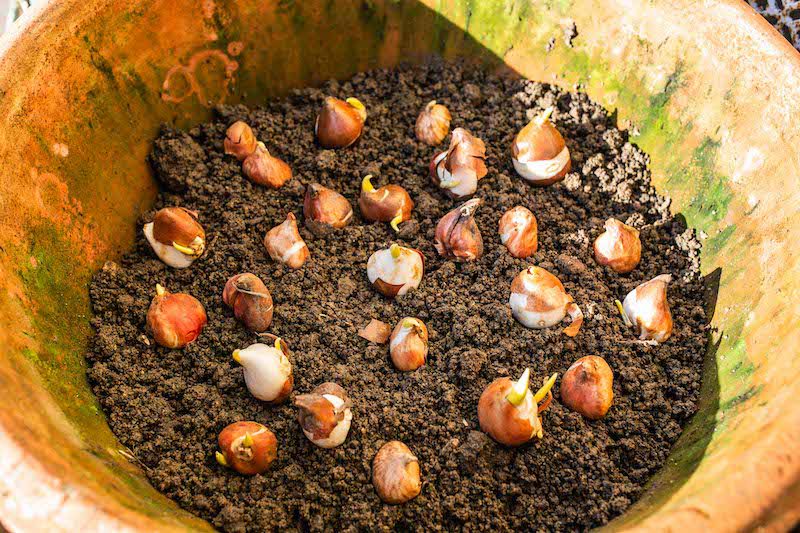
Water well, and leave the pots in a place where they can catch the rain. Remember, bulbs in pots need more watering than ones planted in the ground!
- Spring bulbs love the frost and cold temperatures which help them to flower. They shouldn’t be covered unless the terracotta pots require protection from the frost.
By now you should be flushed with tulpenmanie… and there’s just one cure for it… get planting!
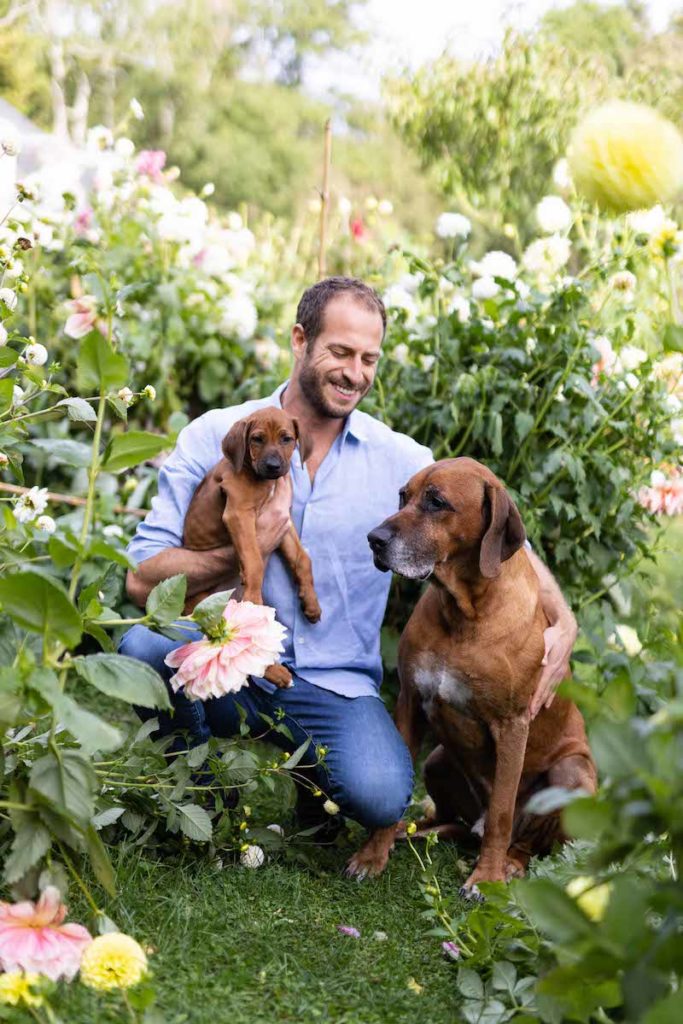

Photos & text by Eduardo Grassi
Follow him on IG HERE and order bulbs from his website HERE!

